Flight Buzz
United Airlines Cancels Over 110 Flights Nationwide, Stranding Passengers at Newark, San Francisco, Denver, and Houston Airports: New Updates You Need To Know
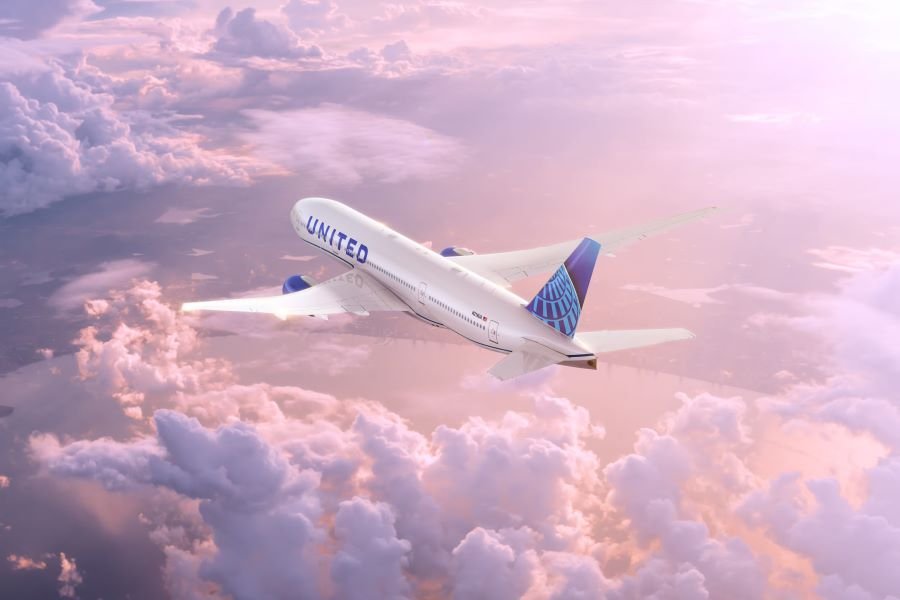
Published on
August 7, 2025 |
Author: Paramita Sarkar
On Wednesday evening, August 6, 2025, United Airlines experienced a significant technology outage that led to the cancellation of over 110 flights across its network. The disruption, which began around 6:15 p.m. ET, affected major hubs including Newark Liberty International Airport (EWR), San Francisco International Airport (SFO), Denver International Airport (DEN), and George Bush Intercontinental Airport (IAH). The issue stemmed from a failure in the airline’s Unimatic system, which handles critical flight data such as weight and balance calculations and flight tracking.
The Federal Aviation Administration (FAA) also intervened, issuing ground stops at several major airports. This contributed to widespread delays and cancellations not only at United Airlines hubs but also at other airports around the United States. Passengers faced massive disruptions as United Airlines struggled to restore its systems, affecting both domestic and international flights. The airline, in response, was forced to offer compensation and rebooking options, but the chaos continued well into the night.
Flight Cancellations and Affected Routes
According to FlightAware, United Airlines had canceled 23 flights by 6:25 p.m. ET, with the number increasing as the evening progressed. The cancellations impacted both domestic and international routes, with notable disruptions on flights departing from and arriving at major U.S. airports.
Key Affected Routes:
- Newark (EWR): Several departures and arrivals were canceled or delayed, including flights to destinations such as Chicago (ORD), San Francisco (SFO), and Denver (DEN).
- San Francisco (SFO): Over 150 United flights were delayed, and 11 were canceled, affecting both domestic and international connections.
- Denver (DEN): Multiple flights were delayed, with passengers experiencing extended wait times both on the tarmac and at gates.
- Houston (IAH): Delays and cancellations were reported, impacting flights to various destinations across the U.S.
FlightAware’s MiseryMap highlighted these airports as the most affected, with numerous delays and cancellations throughout the evening.
Passenger Impact and Airline Response
Passengers reported significant disruptions, including extended wait times on the tarmac and at gates. Some travelers experienced delays of up to three hours before being allowed to disembark. United Airlines responded by offering hotel accommodations and $200 compensation to affected passengers. Additionally, the airline provided waivers for rescheduling flights booked before August 5 for travel between August 7 and 10, allowing passengers to rebook without incurring extra costs.
The FAA issued ground stops at several major airports, including Newark, Chicago, and San Francisco, contributing to widespread delays across the U.S. airspace.
Technical Details and Resolution
The outage was traced to a failure in United’s Unimatic system, which is essential for calculating aircraft weight and balance and tracking flight data. United Airlines confirmed that the issue was not a cyberattack and did not affect United Express regional flights or aircraft already in the air. The system was restored after a few hours, but residual delays persisted into the night.
The incident follows a similar disruption at Alaska Airlines earlier this year, raising concerns about the reliability of airline technology systems during peak travel times.
Chaos at major airports
The technology outage that grounded over 110 United Airlines flights created chaos at major airports, including Newark, San Francisco, Denver, and Houston. While the system issues have since been resolved, the airline continues to work through the backlog of delays and cancellations. United Airlines offered compensation to passengers and is taking steps to prevent further disruptions.
Travelers affected by the outage are advised to check the United Airlines website and FlightAware for the latest information on flight statuses and rebooking options.
The incident highlights the vulnerability of airline operations to technological failures, and it remains to be seen whether United will implement further safeguards to prevent such disruptions in the future.
Image: United Airlines
Flight Buzz
Madrid, Barcelona, Malaga, Ibiza, and Palma de Mallorca Among Spanish Airports Hit by Nationwide Baggage Handler Strikes Disrupting Flights Travelers Urged to Reassess Travel Insurance Before Flying with Ryanair All You Need to Know
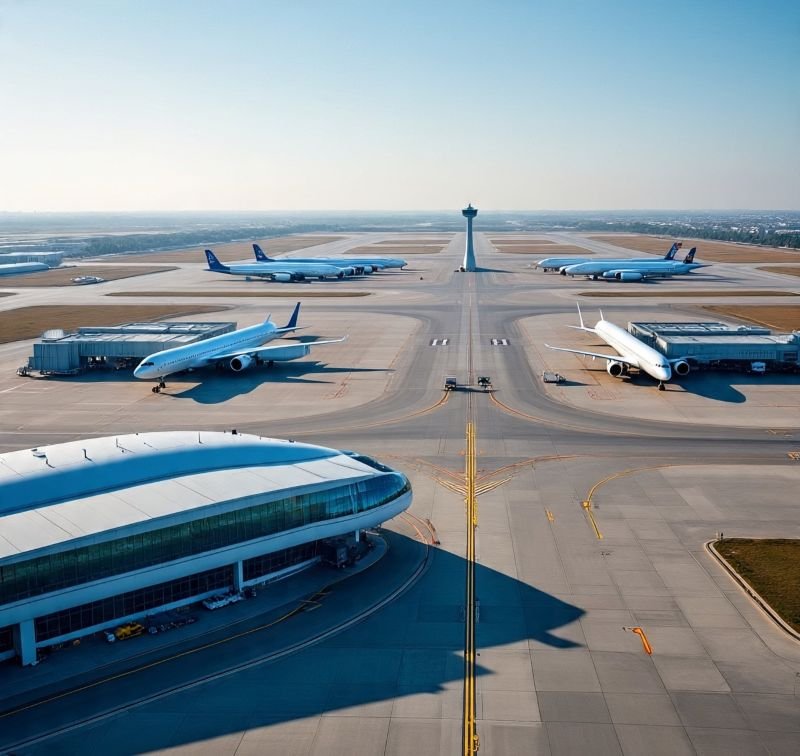
Published on
August 7, 2025 |
By: TTW News Desk
Global Aviation on Alert Amid Spain’s Airport Worker Strike
It was reported that a substantial wave of travel disruption began brewing with the announcement that over 3,000 baggage handling staff in Spain would launch a long-term strike starting mid‑August, prompting widespread concern across the global aviation sector. Observers emphasized that because Spain acts as a critical European transit hub, flight schedules and international itineraries around the world were likely to be adversely affected.
Passengers traveling through Spanish airports, particularly those passing onward to other destinations, were cautioned that any operational delays in Spain could trigger cascading disruptions far beyond national boundaries. Analysts noted that this situation had the potential to derail connections, delay departures, and create knock-on effects across airlines unfamiliar with the strike’s direct involvement but reliant on Spanish ground services.
At the core of the unrest were more than 3,000 baggage handlers employed by a ground services operator. It was pointed out that disruptions to baggage processing—a seemingly behind-the-scenes operation—could have visible consequences on flight punctuality, passenger experience, and airport throughput internationally.
Strike Launches August 15 Across a Dozen Major Hubs
It was confirmed that the labour action would officially start on August 15, impacting 12 primary airports in Spain:
- Madrid‑Barajas
- Barcelona‑El Prat
- Valencia
- Seville
- Alicante
- Ibiza
- Malaga
- Palma de Mallorca
- Tenerife South
- Girona
- Lanzarote
- Santiago de Compostela
It was disclosed that the strike would unfold during three critical daily time frames: from 05:00 to 09:00, 12:00 to 15:00, and 21:00 to 23:59, aligning with peak operational windows in airport schedules. Travelers with flights during these periods were warned of elevated risk of delays and procedural slowdowns
Furthermore, sources emphasized that after the initial three days—August 15, 16, and 17—the strike would recur every Wednesday, Friday, Saturday, and Sunday until the end of 2025, transforming it from a short-lived event into a sustained challenge for airline operations and passenger movement through Spain
Underlying Causes: Workers Demand Fair Conditions
Reports indicated that the strike was the culmination of mounting frustration among ground workers over what they alleged were systemic violations of labour rights and unstable employment conditions. Unions such as UGT and CGT had pointed to coercive overtime policies, punitive disciplinary sanctions (including unpaid suspensions of up to 36 days) for refusing extra hours, and a lack of consolidated schedules for part-time staff as key grievances
Union leaders argued that these practices created insecurity and disregard for existing labour agreements governing pay, scheduling, and job stability. The action, they insisted, was intended to force meaningful negotiation toward improved, lawful working conditions for more than 3,000 employees nationwide
Passenger Impact: Delays, Baggage Mix‑ups, and Itinerary Chaos
Travel experts and union statements both acknowledged that even though minimum service levels would legally remain in force, the repeated, large‑scale stoppages during critical hours were expected to cause major slowdowns. Baggage processing backlogs, slower aircraft turnarounds, and check-in delays were all flagged as probable consequences
Passengers were urged to avoid checking luggage where possible, with carry‑on only travel offering the most reliable way to reduce exposure to lost or delayed baggage. Lessons drawn from past incidents—including luggage not arriving for days—reinforced this advice
Travelers were also reminded of compensation rights under EU 261/UK 261, which may apply if flight delays exceed three hours—unless the strike is deemed an extraordinary circumstance. In previous rulings, strikes by subcontracted ground workers had not automatically exempted airlines from compensation responsibilities, suggesting that passengers could have strong grounds for reimbursement if flights were delayed or cancelled
Insurance and Policy Caveats: What Everyone Must Check
It was noted that most standard travel insurance policies did not automatically cover industrial action unless explicitly included as an add-on or higher-tier benefit. Travelers were strongly advised to review their policy terms carefully to determine whether strike disruption, missed connections, or overstays due to delays were included in coverage.
Important points to confirm included:
- Whether the strike classifies as a “known event” at the time of purchase—policies often exclude coverage for events that were public knowledge at purchase.
- Whether missed departures, accommodation costs, or alternative transport expenses were incorporated.
- Whether the policy clearly covers industrial action and includes provisions for extended delays, stranded travellers, or rebooking costs.
Travelers who had already booked were encouraged to contact their airline immediately to ask about rebooking, alternate routing, or compensation options. Those planning trips ahead were urged to select policies with disruption add-ons and to retain all receipts for potential claims. Adjusting to avoid strike days or hours, if feasible, was highlighted as a practical strategy to limit risk.
Wider Effects on Season‑Long Tourism
Given the strike’s scheduled continuation through 30 December 2025, its impact was projected to extend well beyond the summer holiday season into autumn, winter, and even early 2026. Major airports, particularly Madrid, Barcelona, and Palma de Mallorca, were expected to bear the brunt of ongoing disruption
Some industry analysts predicted that frustrated travelers might reroute through alternate airports in neighboring countries, shifting tourism flows and putting additional strain on airports without the infrastructure to handle sudden surges. Such changes could also impact booking patterns, accommodation demand, and the overall mood around travel to Spain.
Recommendations for Travelers Leaving Soon
It was suggested that passengers with travel plans involving any of the listed Spanish airports take specific steps to minimize inconvenience:
- Verify coverage for strike-related disruptions in insurance policies immediately.
- Understand the definition of a “known event” within the policy terms, which can affect eligibility.
- Contact your airline early to confirm options for rebooking or compensation.
- Document always unforeseen costs such as extra hotels, meals, or transport.
- Where possible, book flights outside of strike windows—especially avoiding check-in and baggage during the outlined timeframes.
These precautions were considered essential for maintaining control over potentially chaotic travel experiences, reducing both stress and financial exposure.
Portable Luggage, Delays, and Destination Confidence
Industry voices pointed out that travelers who strictly packed carry‑on only stood the best chance of avoiding delay issues tied to lost or held luggage. Reddit users recounted stories of unchecked bags failing to arrive for days during similar stoppages, underscoring the wisdom of securing essentials aboard one’s person
If disruptions grew persistent, it was forecast that tourist confidence in Spain—notably during busy seasons—could decline. Some vacationers might redirect plans to destinations perceived as more stable. This shift could erode demand in regions like Barcelona, Malaga, Ibiza, and the Balearics, prompting local tourism services to adapt quickly to reduced footfall or altered timing of arrivals.
Economic and Operational Ramifications Across the Industry
Travel analysts emphasized that the ripple effects of the strike would affect not only individual travelers but also industry operations and revenue flows. Airlines might need to reschedule flights, adjust turnarounds, and allocate additional buffer time between connections to compensate for slower baggage handling.
Airport infrastructure could face bottlenecks, particularly in shared areas where multiple airlines used the same cargo belts or ramp equipment—delays in one zone could cascade into adjacent terminals. Ground‑handling limitations could create aircraft stacking, queueing issues, and delays impacting on-time performance metrics.
Tourism providers—hotels, restaurants, local attractions—might see changes in arrival times, cluster demand shifts, and increased customer service queries. The need for transparent communication and flexibility became paramount for service providers in retaining traveler trust.
The Underlying Story: Workers With Grievances Demand Change
As coverage made clear, labor representatives detailed several reasons behind the escalation, including alleged imposition of overtime hours without consent, disciplinary actions for signing off from mandated extra shifts, lack of transparent bonus and compensation structures, and restrictions on returning to work post‑medical leave.
Unions had demanded that sanctions be lifted, work conditions formalized, and meaningful negotiations initiated to improve contracts for over 3,000 employees across Spain. The failure to engage meaningfully was stated as a key reason the fourth quarter 2025 strikes remained scheduled
How the Travel Industry Must React
Travel industry leaders were urged to:
- Closely monitor the transport ministry’s declaration of minimum service levels, which under Spanish law would determine how many operational functions must continue even during strikes.
- Communicate clear guidance to travelers about arrival advisories, check-in times, and compensation rights, especially in the context of EU 261 and UK equivalents.
- Prepare contingency staffing and logistics adjustments to soften potential knock-on effects, such as deploying mobile stairs or reassigning baggage equipment.
- Advise passengers to build in extra time for connections through Spanish airports, or offer alternative routes where possible.
Such preparation was considered essential to mitigate the strike’s impact and preserve booking confidence during volatile travel windows
The Bigger Picture: A European Strike Trend?
It was remarked that this strike in Spain reflected a broader wave of labour unrest in the aviation sector across Europe, where increasing staff shortages and rights disputes were pushing unions into action. This trend suggested that similar disruptions could arise elsewhere, making proactive planning critical for travel stakeholders and holiday planners alike.
Final Reflection
It was underscored that the unfolding ground‑handling strike in Spain—spanning dozens of weekends and peak travel slots—reflected more than a personnel dispute; it symbolized a deeper fracture in operational trust and worker rights frameworks.
Travelers, airlines, and hospitality providers were encouraged to:
- Stay informado and monitor how the strike evolves through December 2025.
- Promote flexibility in itineraries and encourage insurance with disruption coverage.
- Leverage communication to maintain customer confidence, especially when compensating for delays or rebooking.
Despite its projected duration, it was suggested that with careful planning and transparency, the disruptions could be managed well enough to preserve travel experiences worldwide—even in the face of one of the most prolonged airport workforce actions of recent memory.
Highlights to Remember:
- Over 3,000 baggage handlers across Spain are involved in the strike.
- Strikes commence on 15 August 2025, covering 12 major airports, including Madrid, Barcelona, Valencia, Seville, and Palma de Mallorca.
- Work stoppages occur during 05:00–09:00, 12:00–15:00, and 21:00–23:59, then repeat Wednesday, Friday, Saturday, and Sunday through the end of 2025.
- Travelers are urged to verify travel insurance coverage, particularly for industrial action or known events.
- Carry‑on only travel is recommended to minimize risk of lost or delayed baggage.
- The strike is likely to cause global flight ripple effects, with potential tourism shifts away from Spain, as holiday plans adapt.
- Industry stakeholders should plan proactively, update passengers, and adapt logistics to maintain service in turbulent conditions.
Flight Buzz
Delta Passenger Asleep on Flight, Anger at What Woman Does on Next Seat
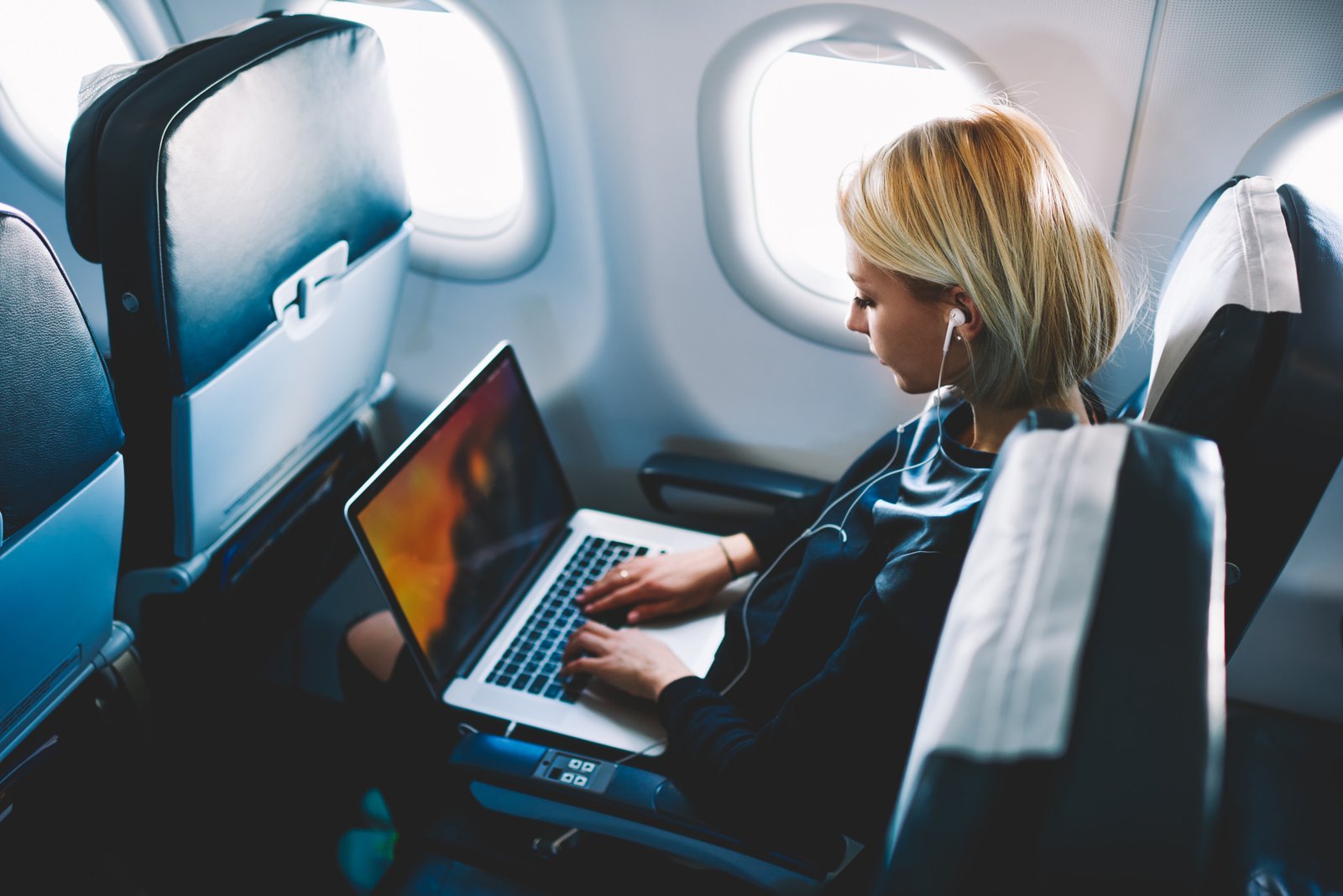
A Delta Air Lines passenger joining a Microsoft Teams call during an early morning flight has prompted criticism on Reddit.
The incident was detailed in a post titled, “New absurd behavior: Teams meeting from flight,” shared by Reddit user u/br0princess on August 4 in the r/delta subreddit.
The post described a woman who disrupted the quiet cabin during a flight from San Francisco International Airport (SFO) to Hartsfield-Jackson Atlanta International Airport (ATL). The poster, who did not share their name or age, told Newsweek: “I was sitting in the main cabin” and the “flight was full.”
“Flying SFO to ATL on the 6:15 a.m., so we all clearly got up early to make the flight,” the user wrote in the post. “I’m prepared to catch some more sleep with my neck pillow, eye mask, and earplugs.”
That plan was upended, the poster explained, when the woman seated next to them began speaking loudly during a video call. “At 8:30 a.m. PT [Pacific Time] this woman next to me wakes me up from TALKING on her Teams meeting, on camera,” the user wrote. “I can tell someone on the meeting was shocked that she joined given that she’s obviously on plane. She goes ‘But it was an important meeting!!!!! I didn’t want to miss it.'”
The poster told Newsweek that the woman wore headphones and only spoke at the start of the call to say she’d keep her camera off. “She didn’t speak again but she did stay on the call to watch her coworkers on the meeting, screen share and take notes/listen…”
The Reddit post quickly gained traction, with 4,400 upvotes and hundreds of comments. It sparked a wide-ranging conversation about in-flight internet etiquette and passenger behavior.
“If it was that important,” the original poster continued. “Maybe don’t fly during your In Person Account Meeting to review your marketing statistics for your client?…I’m FUMING. People have lost their damn minds and basic courtesy.”
Getty
According to the Delta website, free Wi-Fi is available for SkyMiles members on most domestic flights and “once you are connected to Wi-Fi, you can message using messaging apps such as iMessage, Facebook Messenger or WhatsApp on compatible devices.” However, the airline does not specify any guidelines for taking calls on board.
While the U.S. Federal Aviation Administration (FAA) has permitted the use of portable electronic devices during flights since 2013, the rules around voice calls and video conferencing are unknown.
Back in October 2013, the U.S. Federal Aviation Administration (FAA) announced that “airlines can safely expand passenger use of Portable Electronic Devices during all phases of flight” and “most commercial airplanes can tolerate radio interference from portable electronic devices.”
While it’s safe to read downloaded materials, such as e-books and calendars, and to play games, “in some instances of low visibility—about one percent of flights—some landing systems may not be proven to tolerate the interference,” the FAA said, advising that “in those cases, passengers should be asked to turn-off devices.”
While connectivity may be technically safe, airlines and social norms still frown upon disruptive in-flight behavior—especially during early morning flights when many passengers are trying to rest.
The Reddit user told Newsweek: “I did tell her that the call wasn’t allowed, she claimed she didn’t know, even though it was announced at the start of the flight. I told a flight attendant walking past us and the flight attendant told her to stop. She did not and continued to sit on the call.”
The poster then asked the woman to get up and then went to speak with a flight attendant about her again. “She was told she’d get written up if she stayed on the meeting and she said she was only working, not on a meeting,” the poster noted.
“Nothing really came of it,” the poster said. “The part that upset me the most was that she spoke loudly and woke me up on an early morning flight to do something that was prohibited…”
Several Reddit users expressed sympathy with the original poster.
“FA [flight attendant] here: Please ring your call light. I will shut that nonsense down,” wrote user u/Cassie_Bowden in response.
Another commenter, u/New-Reference-2171, agreed: “I came to say this—ring your call button.”
Others were baffled by the woman’s decision to conduct an audible, on-camera meeting mid-flight. “I truly don’t know how all of you stand the entitled people who do this,” wrote u/vampyire.
User u/rando435697 added: “That’s incredibly bizarre behavior by her…for me, I’ve joined meetings in flight, however, I’ve shared in advance with my team that I was going to be on a flight, I’d be off camera and listening in only. Being active and potentially giving away sensitive information—not to mention disturbing other passengers, is just unhinged and wildly inappropriate.”
Newsweek has contacted Delta Air Lines for comment via email.
Do you have a travel-related story to share? Let us know via life@newsweek.com and your story could be featured on Newsweek.
Flight Buzz
ANA’s New Wi-Fi Upgrade Makes Boring Flights a Thing of the Past

Published on
August 7, 2025 |
By: TTW News Desk
The introduction of free in-flight Wi-Fi by ANA is transforming long-haul international flights into an exciting and accessible experience. ANA is ramping up convenience by offering fast, reliable internet access on long-haul flights. This upgrade will allow passengers to freely stream movies, attend virtual meetings, browse, and chat, all without cost. This new service is to be phased in, commencing with select mid-range aircraft and increasing to more than 80% of the international fleet by 2030. ANA’s commitment to travel convenience places them in the world’s digitally advanced airlines. At 35,000 feet, international travel is set to receive a radical upgrade with the new Wi-Fi system equipped to deliver broadband access in the sky.
Mid-Range Aircraft First in Line for Upgrade
The first wave of installations is targeting the carrier’s medium-haul widebody jets, specifically those used on regional international routes across Asia. These aircraft are currently being equipped with advanced satellite internet systems that allow for stable, high-speed connectivity during flight.
By late 2025, three of these mid-range jets will be fully upgraded with the new Wi-Fi system. Another trio of aircraft is scheduled to follow in 2026. These planes are typically deployed on flights between Japan and key cities in Asia and Oceania, making them ideal for the initial phase of implementation.
The service is designed to support a full range of online activity, including streaming video, video calls, social media, and cloud-based work tools. This marks a significant leap from past in-flight systems, many of which offered limited access or required extra fees.
Expansion Set for Long-Haul and New Deliveries
Looking ahead, the airline is preparing to install the same high-performance connectivity across its long-haul fleet. Starting in 2026, newer widebody aircraft used on intercontinental flights—such as those connecting Japan with Europe, North America, and Australia—will begin receiving the same system upgrades.
The plan also includes equipping all new aircraft delivered for international service with the upgraded technology from the outset. This ensures that as the fleet continues to grow and modernize, the in-flight experience remains consistent regardless of the aircraft model or route.
By prioritizing both retrofitting of existing planes and integration into future deliveries, the airline is laying the foundation for a fully connected fleet that caters to the expectations of modern global travelers.
Free Access Aims to Redefine Passenger Expectations
In an age where digital access is considered essential, the move to eliminate charges for in-flight Wi-Fi reflects a major shift in airline service philosophy. Instead of treating internet access as a premium offering, the airline is aligning itself with a growing trend toward complimentary digital amenities.
The upgraded system has been designed to match land-based internet standards, allowing travelers to enjoy uninterrupted connectivity while flying at high altitudes. The goal is to make air travel feel less isolating and more integrated with the digital world—whether passengers want to stream a film, join a video conference, or simply stay in touch with loved ones.
Removing the cost barrier is expected to increase usage across all passenger types, from business travelers to families on holiday. It also places the airline ahead of many global competitors who still rely on pay-per-use or limited-time access models.
Positioning for a Competitive Future in Air Travel
With international travel picking up again, airlines are finding it more and more necessary to rethink how they provide value to customers. While comfort and meals served during the flight are still important, features such as quick and unrestricted Wi-Fi are becoming a deciding factor for longer flight bookings.
This move seeks to resolve issues around customer satisfaction and reposition the airline in the greater context of the very competitive international market. Through making sure that high-speed Wi-Fi is universally accessible, the airline is trying to position itself as a pioneer in the digital services’ provision as a competitive edge in the aviation sector.
The aircraft overhauls also demonstrate the commitment to long-term strategies which are essential in a fast-changing environment where infrastructure frameworks have to adapt to the needs of the customers.
The airline aims to be one of the leading carriers in the international fleet digital connectivity by 2030. With more than 80% of its aircraft expected to be equipped with the free high-speed system, passengers will enjoy a gate-to-gate seamless travel experience during the journey—no login fees and no time constraints.
-

 Brand Stories2 weeks ago
Brand Stories2 weeks agoBloom Hotels: A Modern Vision of Hospitality Redefining Travel
-

 Brand Stories2 weeks ago
Brand Stories2 weeks agoCheQin.ai sets a new standard for hotel booking with its AI capabilities: empowering travellers to bargain, choose the best, and book with clarity.
-

 Destinations & Things To Do3 weeks ago
Destinations & Things To Do3 weeks agoUntouched Destinations: Stunning Hidden Gems You Must Visit
-

 Destinations & Things To Do2 weeks ago
Destinations & Things To Do2 weeks agoThis Hidden Beach in India Glows at Night-But Only in One Secret Season
-

 AI in Travel3 weeks ago
AI in Travel3 weeks agoAI Travel Revolution: Must-Have Guide to the Best Experience
-

 Brand Stories1 month ago
Brand Stories1 month agoVoice AI Startup ElevenLabs Plans to Add Hubs Around the World
-

 Brand Stories4 weeks ago
Brand Stories4 weeks agoHow Elon Musk’s rogue Grok chatbot became a cautionary AI tale
-

 Brand Stories2 weeks ago
Brand Stories2 weeks agoContactless Hospitality: Why Remote Management Technology Is Key to Seamless Guest Experiences
-

 Asia Travel Pulse1 month ago
Asia Travel Pulse1 month agoLooking For Adventure In Asia? Here Are 7 Epic Destinations You Need To Experience At Least Once – Zee News
-

 AI in Travel1 month ago
AI in Travel1 month ago‘Will AI take my job?’ A trip to a Beijing fortune-telling bar to see what lies ahead | China





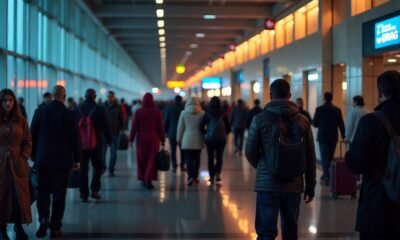

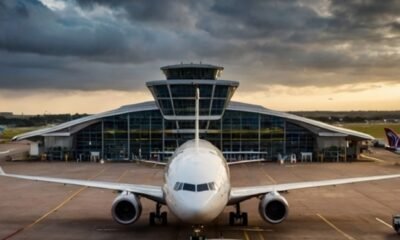





You must be logged in to post a comment Login